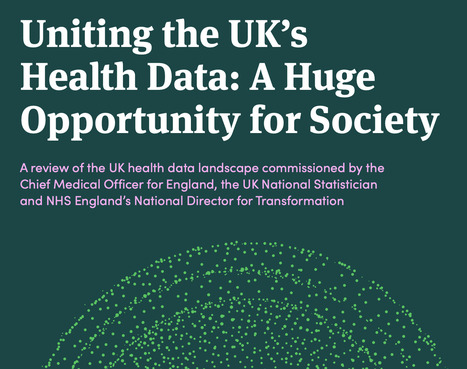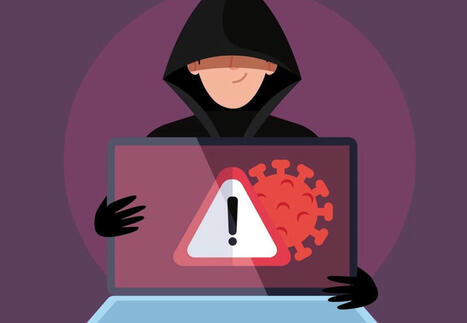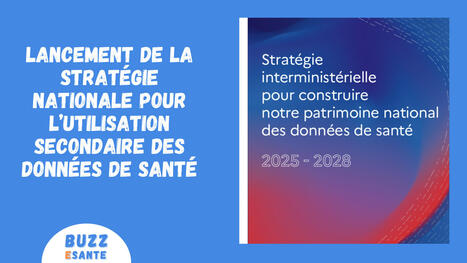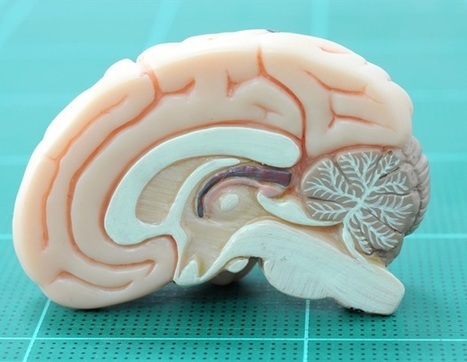 Your new post is loading...
 Your new post is loading...
In a landmark study poised to redefine the precision medicine landscape, researchers have successfully harnessed real-world data alongside advanced machine learning techniques to identify predictive subphenotypes that forecast clinical outcomes with unprecedented accuracy.
Via Emmanuel Capitaine
Le Conseil d'Etat a rejeté la requête visant à annuler la délibération de la Cnil autorisant l'hébergement par Microsoft des données du...-Données personnelles
Via Rémy TESTON
The study introduces a clinical decision support system (CDSS) developed at a single academic cancer center, integrating real-time clinical, genomic, and imaging data for over 170,000 patients across 11 cancer types.
Via Emmanuel Capitaine
Stanford researchers built an algorithm to predict subtypes of Type 2 diabetes that works right from your home.
Via Emmanuel Capitaine
Découvrez des informations d'experts sur L’IA et la gestion des données : stratégies pour une intégration réussie avec notre article approfondi.
In the world of healthcare, we are constantly looking for ways to grow, improve, and innovate with the goal of making the lives of our patients and our staff better. One area in healthcare that's been getting some attention on how to improve is EHR systems.
Via Emmanuel Capitaine

|
Rescooped by
Lionel Reichardt / le Pharmageek
from Buzz e-sante
November 21, 2024 5:26 AM
|
Après un rejet en référé, un rejet au fond : le Conseil d'État a décidé de valider le fait que Microsoft, société américaine soumise aux lois extraterritoriales américaines, héberge les données de santé des Français et des Européens, dans le cadre du développement d’une plateforme européenne destinée à la recherche, l'EMC2. Et ce, même s'il n'est pas exclu que les autorités américaines aient accès à ces données de santé qui seront stockées sur cette plateforme destinée à la recherche.
Via Rémy TESTON

|
Scooped by
Lionel Reichardt / le Pharmageek
November 16, 2024 11:44 AM
|
Plus de 600 cyberattaques ont touché des établissements de santé, en 2023. D’après le ministère de la Santé, ce secteur est le 3e plus visé en France. La semaine dernière, la clinique mutualiste La Sagesse à Rennes (Ille-et-Vilaine) était victime d’une cyberattaque de grande ampleur. Tout comme l’hôpital Simon
Via Rémy TESTON
The following is a summary of “Validity and timeliness of cancer diagnosis data collected during a prospective cohort study and reported by the English and Welsh cancer registries: a retrospective, comparative analysis,” published in the October 2024 issue of Oncology by Jackson et al.
Via Emmanuel Capitaine
Le ministère de la Santé et de l’Accès aux soins, en étroite collaboration avec…
Via Rémy TESTON
Un nouveau référentiel pour la certification HDS vient d’être publié au Journal Officiel.Ce document est porteur de nombreuses modifications pour l’activité d’hébergement externalisé des données de santé personnelles…...
Via Emmanuel Capitaine
Les députés européens ont adopté, le 24 avril 2024, le règlement pour la création d'un Espace européen des données de santé (EEDS) ou European Health Data Space (EHDS), première déclinaison sectorielle du règlement sur la gouvernance des données (DGA).
Via Doc-Ifsi-Narbonne
|
The success of artificial intelligence in health care depends entirely on solving foundational data quality issues that currently hinder reliability, interoperability, and effective clinical decision support.
Via Emmanuel Capitaine
La Fondation d'entreprise MGEN pour la santé publique lance son entrepôt de données de santé pour analyser le parcours de santé des...-Assurance
Via Rémy TESTON
L'espace européen des données de santé (EEDS), qui facilite le partage de ces données entre l'ensemble des acteurs européens, découle de la mise en œuvre de la stratégie européenne pour les données adoptée en 2020. C'est un pilier de l'autonomie numérique européenne. Comment le définir ? Comment protège-t-il les données à caractère personnel ? |
Via Patrice FACIN
Le premier ministre du Royaume-Uni Keir Starmer présente aujourd’hui une stratégie nationale pour faire du Royaume-Uni un leader en matière d’intelligence artificielle. D’après son gouvernement travailliste, l’IA sera « déployée » dans l’ensemble du pays, soutenue par l’administration.
Via Emmanuel Capitaine
Par le Dr.Cyrille Isaac-Sibille, Député de la 12e circonscription du Rhône...
Via Emmanuel Capitaine

|
Scooped by
Lionel Reichardt / le Pharmageek
December 27, 2024 11:10 AM
|
Le leader de la prise de rendez-vous médical propose un espace permettant de réunir les données de santé d’un patient. Une offre vue par certains acteurs du secteur comme concurrente de « Mon espace santé », de l’Assurance-maladie.

|
Rescooped by
Lionel Reichardt / le Pharmageek
from Buzz e-sante
November 20, 2024 11:45 AM
|
La France est secouée par une nouvelle fuite de données. Un cybercriminel a mis en vente les dossiers médicaux de 750 000 Français. Ces données ont été volées par le biais de Mediboard, un logiciel de gestion de santé.
Via Rémy TESTON
A new bill which will allow patients’ data to be easily transferable across the NHS has been introduced to Parliament.
Via Emmanuel Capitaine

|
Rescooped by
Lionel Reichardt / le Pharmageek
from Doctors Hub
October 19, 2024 5:19 AM
|
Dans le cadre de la cyberweek organisée du 14 au 18 octobre, l’Agence du numérique et Wallonie relance ont organisé deux événements pour sensibiliser les hôpitaux et les petites structures de santé à la cyberprotection. Un livre blanc consacré aux défis et aux meilleurs pratiques de la cybersécurité dans le secteur de la santé vient d’être publié. Un hôpital averti, en vaut deux…
Via Philippe Marchal
À l’ère de l’apprentissage automatique et de l’intelligence artificielle, l’exploitation de la neuroimagerie à grande échelle peut faciliter de nouvelles découvertes dans la recherche en neurosciences. À cette fin, l'American Heart Association, qui célèbre 100 ans de service salvateur en 2024, a accordé une subvention de deux ans de 460 000 $ à un consortium […]
Via Rémy TESTON
Le Health Data Hub a publié le 21 mai son rapport annuel 2023. L'année a été marquée par le lancement d’une centaine de projets et par la signature de cinq contrats visant à alimenter le Système national de données de santé (SNDS).
Via Emmanuel Capitaine
Dans une étude récente publiée sur le arXiv preprint*, une grande équipe d'ingénieurs et de chercheurs de Google a présenté un système d'agent à grand modèle de langage (LLM) appelé Personal Health Insights Agent ou PHIA qui peut utiliser des outils de récupération d'informations et des méthodes avancées de génération de code pour analyser et […]
Via Rémy TESTON
|



 Your new post is loading...
Your new post is loading...




























In a landmark study poised to redefine the precision medicine landscape, researchers have successfully harnessed real-world data alongside advanced machine learning techniques to identify predictive subphenotypes that forecast clinical outcomes with unprecedented accuracy.